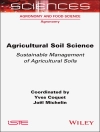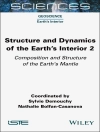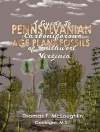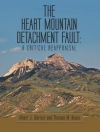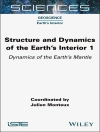Dive into the dynamic world of environmental stewardship with ‘Soil, Water Pollution, and Mitigation Strategies: A Spatial Approach.’ This meticulously crafted volume offers a comprehensive journey through the measurement, monitoring, mapping, and modelling of soil and water pollution, coupled with innovative mitigation strategies. Discover cutting-edge techniques rooted in modern geospatial methodologies, with a sharp focus on the latest trends in data mining and robust modelling. As our planet grapples with the consequences of anthropogenic activities, such as indiscriminate chemical usage in agriculture, the need for precise quantification and risk assessment has never been more urgent. This book serves as a beacon, illuminating the path toward sustainable management of soil and water resources through the lens of geospatial technology. Explore a myriad of critical topics, including soil microbiology, salinity, pollution from industrial sources, heavy metals, and the pervasive impact of agricultural practices. Delve into environmental risk assessment, sustainable land use, and innovative remediation techniques, such as harnessing the power of Plant Growth-Promoting Rhizobacteria (PGPR) and embracing organic fertilizers.
Written for researchers, professionals, and policymakers alike, this book offers invaluable insights into the complex interplay between human activity and environmental health. Organized into two parts (I) Soil Contaminants, Risk Assessment, and Mitigation, and (II) Water Contaminants, Risk Assessment, and Mitigation—it provides a structured approach to understanding and addressing environmental challenges. Each chapter serves as a portal to a deeper understanding of the issues at hand, presenting a synthesis of current research, identifying future directions, and offering pragmatic solutions. This book promises to enrich the understanding of environmental science and empower the reader with the knowledge and skills needed to effect positive change. Designed to cater to a diverse audience—from students and researchers in environmental sciences to policymakers, NGOs, and corporate stakeholders—this book is a testament to the collaborative effort required to safeguard our planet’s precious resources. This is a transformative journey toward a more sustainable future—one informed by science, guided by innovation, and driven by a shared commitment to environmental stewardship.
Mục lục
Soil nutrients and health status.- Digital carbon stock modeling.- Nitrogenous Wastes and Its Efficient Treatment in Wastewater.- Microbial contamination of drinking water.- Wastewater pollution in agriculture field and its mitigation strategies.- Groundwater nitrate contamination and its mitigation.- Novel molecular tracers for the assessment of groundwater pollution.- Remediation of groundwater contaminated with dye using carbon dots technology.
Giới thiệu về tác giả
Dr. Partha Pratim Adhikary is Principal Scientist at ICAR-National Bureau of Soil Survey & Land Use Planning, Nagpur, India. He obtained his Ph.D. in Agricultural Physics from ICAR-Indian Agricultural Research Institute, New Delhi, India. His research interests include solute transport, soil and water conservation and management, pedotransfer functions and geospatial modeling of natural resources. Dr. Adhikary has published more than 100 research papers in peer-reviewed journals and fourteen books. His other publications include book chapters, popular articles, technology brochures, technical bulletins and scientific reports. He is Associate Editor of Indian Journal of Soil Conservation. Currently, he is Editor of Springer Nature book series “GIScience and Geo-environmental Modelling”.
Dr. Pravat Kumar Shit is an Assistant Professor at the PG Department of Geography, Raja N. L. Khan Women’s College (Autonomous), West Bengal, India. He received his M.Sc & Ph.D. degrees in Geography from Vidyasagar University and PG Diploma in Remote Sensing & GIS from Sambalpur University. His research interests include applied geomorphology, soil erosion, groundwater, forest resources, wetland ecosystem, environmental contaminants & pollution, and natural resources mapping & modelling. Dr. Shit has published twenty five books (Springer, Elsevier, CRC Press) and more than 100 research papers in peer-reviewed journals and 90 book chapters. He is also the guest editor of “Environmental Science and Pollution Research” and “Applied Water Science”. He is currently the editor of the GIScience and Geo-environmental Modelling (GGM) Book Series, Springer-Nature.
Dr. Jayasree Laha is an esteemed academic and renowned scientist who currently holds the position of Principal at Raja Narendralal Khan Women’s College (Autonomous) in West Bengal, India. With a strong passion for both research and teaching, Dr. Laha has made significant contributions to the fields of nanotechnology, heavy metals pollution, and environmental contaminants. Dr. Laha’s academic journey commenced at the prestigious Indian Institute of Technology (IIT-Kharagpur) in Kharagpur, India, where she pursued her M.Sc. and Ph.D. degrees. It was during her time at IIT-Kharagpur that Dr. Laha developed a keen interest in the fascinating overlap between chemistry and environmental science. She focused her studies on investigating the impact of nanoparticles and heavy metals on the environment, recognizing the importance of understanding their effects and finding sustainable solutions. Throughout her illustrious career, Dr. Laha has consistently demonstrated a deep commitment to scientific research, contributing immensely to her field of expertise. Her groundbreaking work has been published in over 20 research papers in prestigious peer-reviewed journals, highlighting her expertise and innovative research methodologies.






